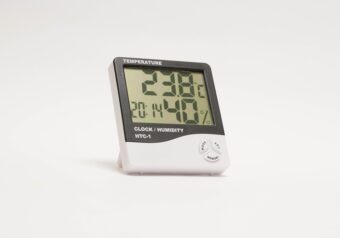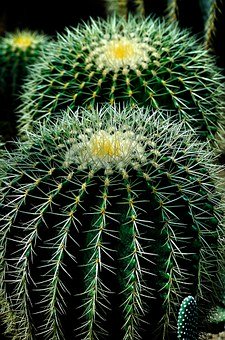In this article, we will be discussing why getting the warmth and humidity right for your houseplant is so important. When you grow houseplants you know that you have to get the lighting levels right, the watering regimes correct but there is more that houseplants require.

Houseplants also need the temperature to be within a certain value and the humidity to be within a certain range. This is because houseplants do not do well if they are too cold and the air is too dry. This article addresses these two issues, so you know what temperature and humidity to use.
WARMTH
Getting your plants in the right warmth is an important factor in how a plant will grow. The biggest problem is that houseplants vary greatly in their requirements because of the diverse natural habitat they are often found in, which must be replicated in the home.
For instance, many foliage plants are natives of the tropics, whilst other plants come from more temperate regions of the world. Lucky flowering houseplants do well in less temperature variations and most do best in cool to average temperatures.
One exception to the rules is the bromeliads, as they must be kept at 24-degree Celsius if they are to produce flowering buds. Even the exotic flower will survive quite happily on more normal temperature once they have come into flower.
CENTRAL HEATING CAN BE PROBLEMATIC
A modern, centrally heated home, where the day temperature is anywhere between 20 and 24 degrees Celsius and the temperature does not drop to below 10 degree Celsius, can provide an ideal location for all types of houseplants. If you want to know what plants do well in warm conditions then you must read this article.
In fact, too much heat can be detrimental even to tropical houseplants. The problem is that in their natural inhabitants the high temperatures are balanced by bright, sunlight.

Lighting levels indoors tend to not to be too bright, so if temperatures are too high the plants will be drawn up and grow spindly. This is also bad news for flowering plants as high temperature can narrow the flowering period.
Another important consideration, especially in a centrally heated home is the dryness of the atmosphere. Under this conditions, most plants transpire very freely, losing a lot of water from their leaves, where the rate of moisture loses increases as the temperature rises, and it can reach a point where it exceeds the water uptaken by the roots.
The result is the leaves dry up and if this continues, the leaf edges will turn brown and the leaves will eventually fall prematurely.
This can be prevented by increasing the humidity of the air that surrounds the plants. Ways to increase humidity will be discussed later.
Although it is generally accepted that too high temperatures can kill some plants. It should also be realised that it is possible to mitigate any ill-effect by increasing the humidity of the air that surrounds the plant. If this is done and the plant is given as much light as possible, then they will adapt to its surroundings.
WHAT ABOUT LOW TEMPERATURES?
If a plant has been exposed to too low temperatures there is no easy remedy to reverse any damage suffered by the plant.

If your home drops below 15 degrees Celsius the following tender species cannot be grown Acalypha, Aglaonema, Anthurium, Caladium, Calathea, Cissus discolor, Dieffenbachia, Dizygotheca and Syngonium.
Most other types will survive a drop to 10 degrees Celsius, whilst others will survive a drop to 4.5 degrees Celsius. This includes houseplants such as Aspidistra, Maranta, Rhoicissus and Tradescantia.
WHAT PLANTS FLOURISH IN COOL TO AVERAGE TEMPERATURES?
Most of the popular flowering houseplants will flourish under these conditions but at the same time. it will survive quite well in a centrally heated home provided enough light is provided.

Plants that prefer cooler temperatures will not do as well. Plants like Azalea, Beloperone, Browallia, Chrysanthemum and Cyclamens, only have a short life indoors unless they are kept in well-lit and rather cool areas of the home.
Based on their heat requirements, houseplants can be divided into three groups.
- Tender. Require a minimum temperature of 15 degrees Celsius but will be at its best at 24 degrees Celsius provided that the humidity is high enough.
- Half-Hardy. These include most flowering houseplants that prefer cool to average temperature and most will survive to a minimum temperature of 10 degrees Celsius. The prefer growing temperature range is 13 to 21 degrees Celsius.
- Hardy. These are plants that will survive a minimum temperature as low as 4.5 degrees Celsius and will grow quite well in normal room temperatures.
WHAT ABOUT TEMPERATURE FLUCTUATIONS?
All plants will tolerate a small, overnight temperature drop, so the fall should not normally be a problem, Major temperature drops, such as can occur in winter in frosty weather can, however, be damaging particularly if the plants are placed between drawn curtains and the window.
It is best, therefore, to move these plants from the windowsill in the evening before drawing the curtains. If you draw the curtains early heat will be retained in the room.
Do also remember too that both doors and windows can be a source of draughts that are harmful to plants. As ever there are exceptions to these rules, as cacti like very low temperatures at night, as this is their feature in their natural, desert habitant. They will find it easy to adapt.
HUMIDITY
As said earlier central heating tends to dry the atmosphere of the home, but it is not very much appreciated that plants prefer more humid conditions.
In effect, you want the home to be warm in winter, but the plants prefer it to be humid. You cannot win.
Houseplant whose natural habitat is a steamy jungle is the most affected. Saying that some temperate plants from other regions of the world can also suffer to some extent. Indeed the only plants that thrive in this unusually dry atmosphere are desert plants such as cacti and succulents.
HOW DO PLANTS REACT TO LOW HUMIDITY?
In a dry atmosphere, the rate of water loss by transpiration is increased. Consequently, the leaves tend to dry put quickly and the plant wilts, whose effect is more pronounced in plants with papery thin leaves.
The first sign of damage us that the leaves shrivel and turn brown, whilst most resistant plant the leaves will droop. If the dryness continues, early leaf fall can be induced and eventually the plant will be naked as no leaves will remain.
Flowering plants tend to be severely affected if they are kept in low humidity. The flowers soon fade, the flowering buds dry up and fall without opening. Plants with thick, rubbery leaves such as succulents are least affected and can be relied on to survive under these conditions.
HOW TO INCREASE HUMIDITY

One easy solution to this problem is to have houseplants in the kitchen or bathroom, where the air is naturally more humid than in the rest of the house.
Another more costly approach is to use humidifiers to increase the general level of water in the air around the home. This is a drastic step to take and you must be a houseplant fanatic to invest in one.
This is problematic as black moulds like to grow in high humidity areas, so you are increasing the likelihood that this can occur. A better solution is to use one of the following methods to increase the humidity om the vicinity of your houseplants.
DOUBLE POTTING
This involves sinking the plant pot in moist compost in a larger, waterproof, attractive display pot. All you need to do then is keep the compost continuously moist to ensure that the air surrounding you houseplant remains humid.
A bonus is that the moist compost will act as a reserve reservoir for the plant and act as am insulator, protecting the plant from an overnight temperature drop.
GRAVEL TRAYS
These are usually shallow plastic trays that are designed to hold a thin layer of gravel that has been wetted. On top of this gravel, the houseplant pots can be placed on.
The plants can be grouped on these gravel trays, thus benefitting from the humidification effect of the wet gravel. Watering of the plant is also easy since any excess water can be allowed to drain away and rewet the gravel below.
LARGE CONTAINERS
If gravel trays are not to your liking, you can use deeper decorative containers and pack moist compost and gravel around individual pots. It is, of course, essential that the container is waterproof and has no holes at the bottom of it.
One great aspect is that you can multi-plant various houseplants in their growing media in the same container.
There are some disadvantages to doing this. Firstly, it is not possible to water according to the plant’s individual needs. Secondly, since drainage holes are not provided or they clog up because of the compost, there is a risk of the compost becoming easily waterlogged and root rots setting in. This will increase the chance of the plant dying.
TERRARIUMS AND OTHER GLASS CASES
This has been discussed in a previous article. It is an effective way of ensuring constant high humidity around the plants, is to grow them on a large bottle, glass vessel or a fish tank. This method has the additional advantage that watering requirements are minimized, but it is only suitable for the display rather small group of slow-growing plants.
MISTING
We cannot talk about humidity without mentioning misting. This treatment is a valuable way of increasing humidity of the air surrounding single plants, but it can also be used for a group of plants that are close proximity to each other.

All you need to do is lightly mist the leaves and the surrounding air with tepid water using a small sprayer with the nozzle adjusted to give a fine spray as possible.
Misting is best done in the morning when the plants are not exposed to bright sunlight. Evening misting should be avoided as this can result in fungal problems developing on the plants.
Most houseplants will benefit from a misting, but with some flowering plants such as Achimenes, Begonia, Calceolaria, Cineraria, Cyclamen and Geraniums, it is important to restrict the misting to the surrounding air and to avoid wetting the leaves and flowers.
Cacti and succulents are the only houseplants that should not be misted since they are liable to develop roots in the humid air.
Whilst misting, remember to watch out for your wallpaper and furnishings, which can be ruined by constant misting. In the bathroom. The plants can be placed in the bath and then misted whilst at the same time watering the plants. In the kitchen, they can be placed in the sink. In other room, move the plant where they can be misted without damaging any furniture. Groups of plants can have their humidity increase if they are misted together.
CONCLUSIONS
In this article, we have discussed why getting the warmth for houseplants and its humidity it grows in, is very important for the plants well being. If the plants are placed in too cold a location or if it is placed into a dry atmosphere the plant will not do well at all.
Many ways of increasing humidity have been enclosed and it is up to you to know what is your preferred method of doing so. Try to get the growing conditions for your plants right, if you want it to do well.
If you have any comments and questions that you wish to ask to get a better understanding of the subject, please do so in the comment box below.
Humidity and temperature do go hand in hand.

Thanks for bringing this important article to our reach here, it’s very important for us as plant keepers to know how to take proper care of the plants in order to keep them growing and multiplying, temperature is a very important part of plant growth and survival, this article will help put people through on how to get the warmth and humidity right for houseplants.
Hi Jbryce
Thank you for stopping by and commenting once again. It is important to get the growing conditions of the plant right as without it they will look sad and be not productive. I hope you take all the tips on board.
Thanks
Antonio
Hello again! This is yet another educative article on getting the warmth and humidity right for my house plants. The other article I came across was very helpful and this one too proves to be helpful. I didn’t know getting the warmth and humidity right for my house plants affects it’s well being. I used to think they’ll be okay as long as I’m paying attention to them. Your article is an eye opener and I know better now. Thank you very much.
Hi Sophie
Thank you for stopping by and commenting once again. Getting your houseplants happy is very important as if you do ot they will suffer and simply not produce or worse die. I hope you apply them to your indoor garden.
Kind regards
Antonio